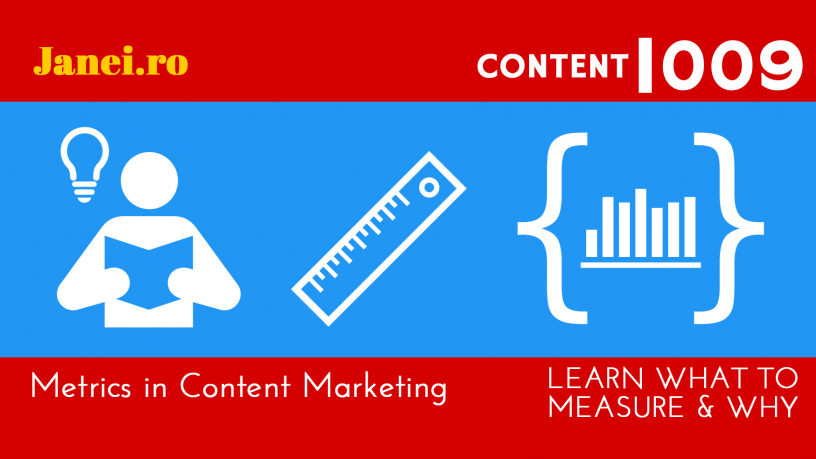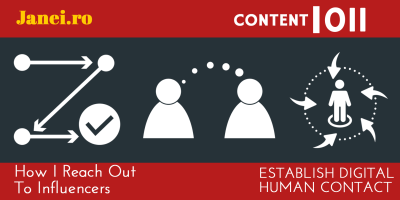Writing content is fun. Sometimes it’s even easy. But measuring the impact of that content? Using metrics to gain insights? That’s hella tough. In this article I’ll be compiling and learning all about Metrics in Content Marketing!
The 12 Content Marketing Metrics You Aren’t Tracking
Aaron Agius from LouderOnline published an article at the end of June of this year over at SearchEngineJournal. In it he describes the 12 metrics you probably aren’t tracking, but should. So I thought that could be a good place to start.
- First there’s Average Finish (measured as seconds to get to the bottom of the content, in seconds – thanks to Justin Cutroni).
- Then there’s Content Longevity (how long your content will continue to get engagement, like shares – a study from bit.ly reveals the half life of one of their links is 3 hours).
- Third is Number of Return Readers. This is important because the more people engage with your content, the more they’re thinking of your brand – Buzzfeed collaborated with Virgin Mobile and created this case study.
- Fourth on the list is Time Engaged with Content. This felt more like a differently worded Time on Page, so I’m not sure about this one overall.
- Audience Contribution means the number of reviews and comments your content brings. It’s important to connect it to your business objectives.
- I thought Reduced Time to Purchase was a great idea, but hard to put into practice in this multi-layered, always connected world.
- Links from Thought Leaders are always great and typically easy to measure accurately.
- If Content is cheaper than Ads and brings the same or better results, you should also measure your Cost Effectiveness.
- Leads per Keyword is another metric that goes a bit towards the microscopic side of things. I’d rather just have SEO vs Ads.
- Return on Investment equals Sales from Content Marketing. The simple formula makes everything clear.
- One thing you should definitely measure is how much it costs to make the content – Production Costs.
- The last metric is Distribution Costs per Piece – add up this and Production Costs and you’ve got an overall look at how expensive (or cheap) your content is.
While a good list overall, I felt like some items were highly influenced by others. So they had to be measured together somehow.
How Do You Measure Your Content Marketing Success?
Ramona at the Impact Branding & Design Blog makes things easier, by grouping metrics into 3 categories, related to your business: Awareness, Consideration and Conversion.
1. Awareness in this case means:
- Higher rankings in search results
- Increase in the number of New Visitors
- Increase in number of social signals – likes, followers, etc.
2. Measuring Consideration we get to:
- Increased number of Total Page Views
- Longer Visit Duration
- Lower Bounce Rate
- Increase in number of other social metrics – video views, content shares, comments, etc.
3. The hardest to measure and most important category is Conversion:
- Increased Conversion Rate – sales and/or leads
- Contributing sources to the Conversion Funnel
- Increased social media referrals
- Subscriber vs non-subscriber behavior
I personally find this version much more digestible. Content Marketing newbies are sure to latch on to this interpretation, as it contains metrics closely related to traditional digital marketing and social-media measurement.
Just Use These 4 Content Marketing Metrics that Really Matter
Jay Baer at Convince & Convert also provides a look at these metrics, grouping them into: Consumption, Sharing, Lead Generation and Sales. It only makes sense: a visitor has to find the content, consume it (read it, view it, interact with it, etc.). He/she has the option to share it, if he/she thinks it’s great. Further down the line (not necessarily that same piece of content) will make him/her sign up for a newsletter, a webinar or a free demo. Then there’s just that last step of making a sale, that originated in and was influenced by a piece of content.
The Comprehensive Guide To Content Marketing Analytics & Metrics
Curata has an entire ebook dedicated to Content Marketing Metrics. Pawan and his team have settled on 4 main elements for measurement (based on A Field Guide To The Four Types Of Content Marketing Metrics), assisted by 4 others. These will all make a lot more sense once you download the ebook, so I highly advise you to do so.
The 4 metrics mentioned before (Consumption, Sharing, Lead Generation and Sales) are now joined by 4 more, two external and two internal:
- Retention/Subscription – how effective are you at holding the audience’s attention beyond the initial point of contact?
- Engagement – does your content inspire people to take action? what kind of action are they taking? how often?
- Production – how is your team performing in terms of schedule and goals, how long is the creation process, how many piece are content in a set time period (1 week, 1 month, 1 year, etc)?
- Cost – what are the overall content marketing costs, the costs per piece, the distribution and promotion costs, etc.?
The 7 Metrics For Accuracy In Content Marketing Measurement
Brian at the SumAll blog mentions most of the metrics outlined before, but adds a special one: Thought Leadership. Essentially, you should look at your brand’s vision as the best in the business. How do you become an expert in your niche/market? A rather abstract metric, but one that could be quantified as: you start getting invited to interviews, podcasts, to share your opinion on TV, to write a guest post, to become a speaker at a large marketing conference and so on.
Start Tracking These 17 Content Marketing Metrics Today
Aaron has written another article, this time on the JeffBullas’s blog about 17 (!!!) metrics to keep in mind. This article was written before the one from Search Engine Journal and this time they’re most of your usual suspects: Time on Site, Unique Visitors, Returning Visitors, Total Leads, Bounce Rate, Volume of Organic Leads, Natural Inbound Links, Cost Effectiveness, Lead-Close Rate, Call To Action CTR, Total Social Shares, Keyword Rankings, Landing Page Views, External Referral Sources to Landing Pages, Internal Referral Sources to Landing Pages, Leads per Keyword, Reader Comments.
No matter how you slice and dice it, measurement in Content Marketing is still pretty new. Most articles, guides, tutorials, ebooks and white papers date back to about 2013-2014.
Remember when social-media really got big? And marketers were still measuring fans? Then moved to engagement. Then engagement+ROI. Then they just integrated that whole social-media element into their overall digital marketing measurement? I strongly believe in connecting Content Marketing metrics to more elements of your strategy and not isolating them on their own.
But if you really want an answer, right now I’m only looking at Overall Traffic, Number Of Shares and Number Of Comments. It leads me to believe people enjoy the content, find it valuable and see it intriguing enough to have their say about it.







Leave a Reply